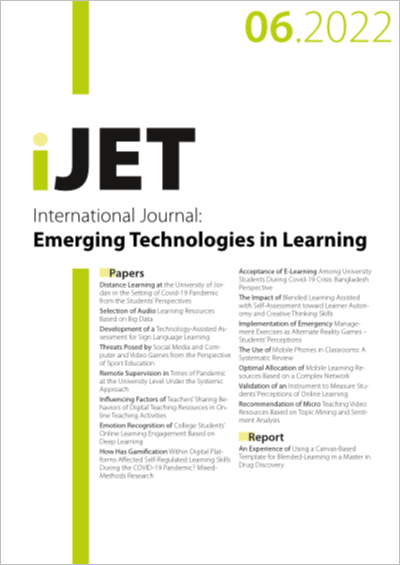Threats Posed by Social Media and Computer and Video Games from the Perspective of Sport Education
DOI:
https://doi.org/10.3991/ijet.v17i06.18989Keywords:
Physical education curriculum, sedentary behaviors, social media, university studentsAbstract
Sedentary behaviors are increasingly common, exerting a heavy financial burden on society and becoming a risk factor for chronic diseases and mor-tality. Taiwan has one of the highest obesity prevalence rates among Asian countries. This cross-sectional study investigated the correlation of socio-demographic characteristics and PE enrollment with the time spent on vari-ous sedentary behaviors. The valid responses of 1,195 Taiwanese university students on a survey were analyzed. They were recruited between May and June 2019 using cluster sampling. The survey inquired into demographic characteristics and the self-reported time spent on various sedentary behav-iors. Descriptive statistics, one-way analysis of variance, a t test, and effect size analysis were used to analyze the data. The results indicated that univer-sity students in Taiwan were sedentary for an average of 474 minutes per day, with use of social media being the most prevalent sedentary activity at 123 minutes per day. The severely overweight group was most sedentary, and female students and students that were not enrolled in a PE class tended to spend more time on video games and social media.
Downloads
Published
2022-03-29
How to Cite
Kao, C.-C., Liao, C.-C., & Luo, Y.-J. (2022). Threats Posed by Social Media and Computer and Video Games from the Perspective of Sport Education. International Journal of Emerging Technologies in Learning (iJET), 17(06), pp. 57–72. https://doi.org/10.3991/ijet.v17i06.18989
Issue
Section
Papers
License
Copyright (c) 2022 Chun-Chieh Kao, Wen-Yi Wang, Yu-Jy Luo

This work is licensed under a Creative Commons Attribution 4.0 International License.



